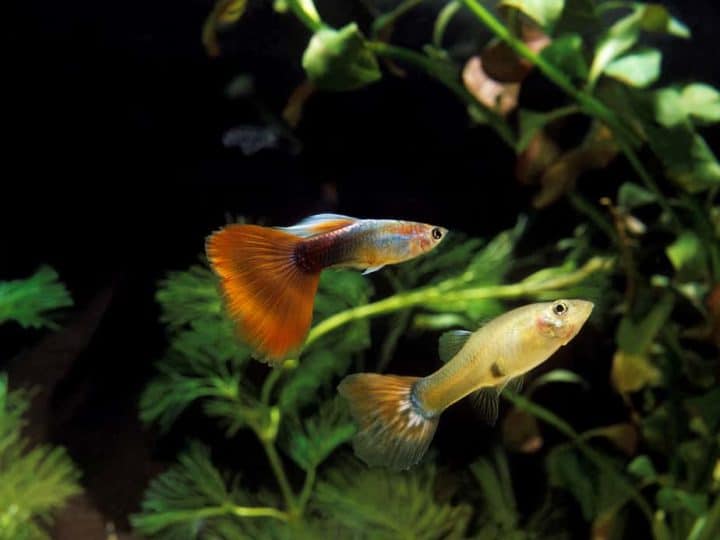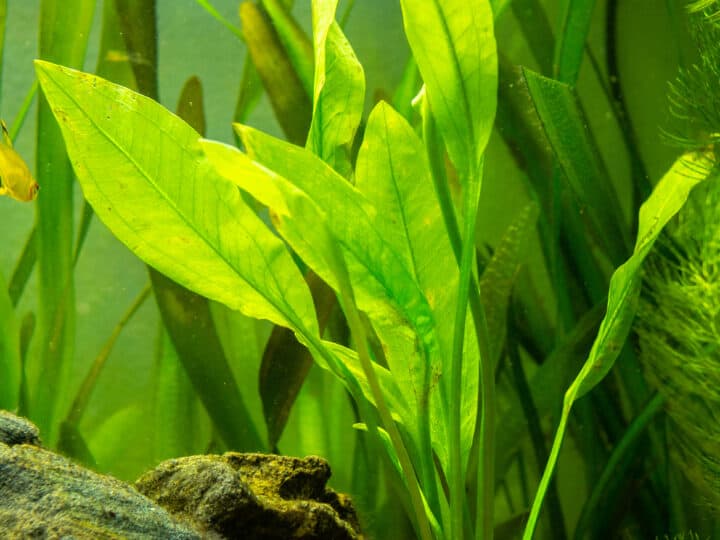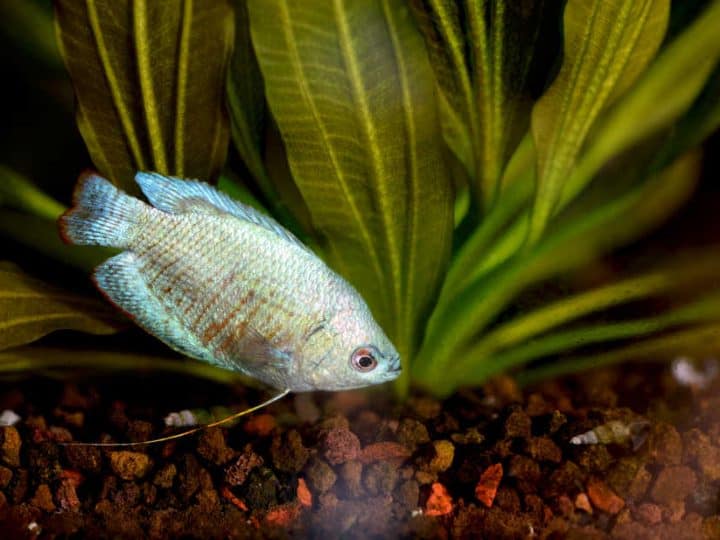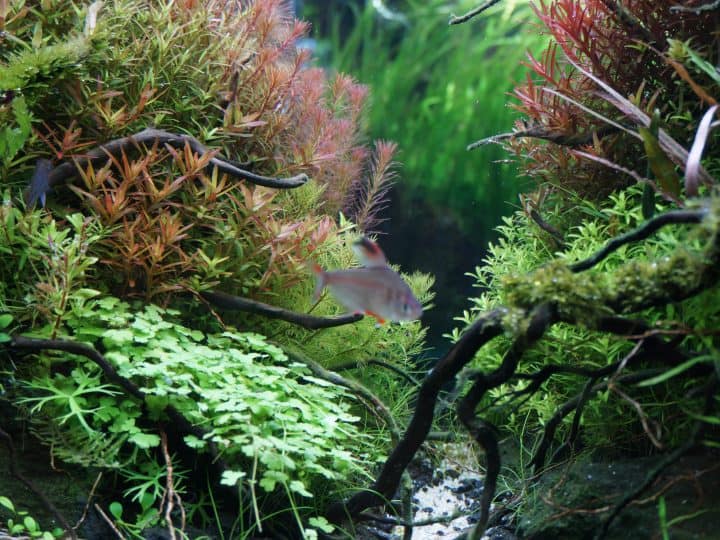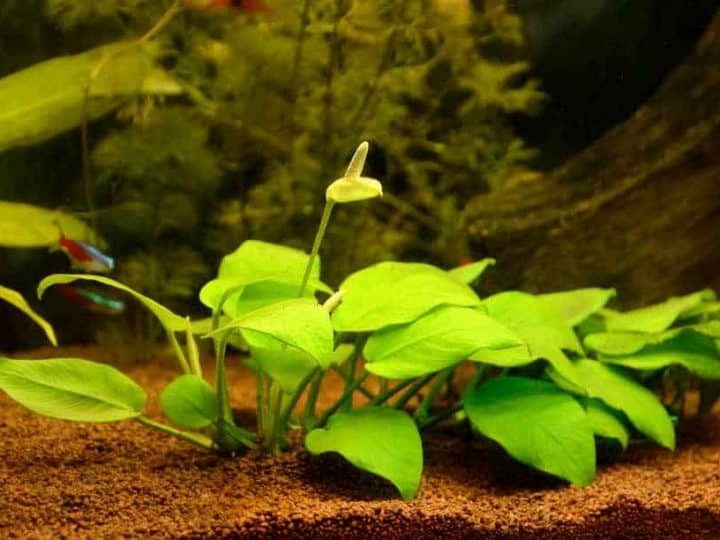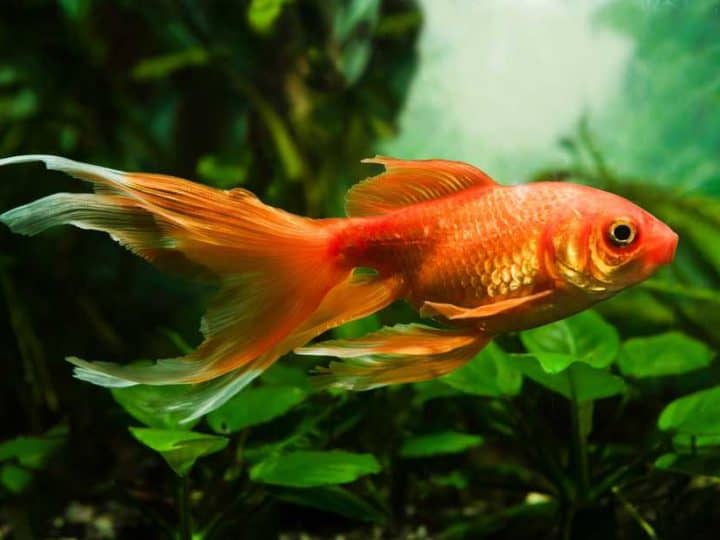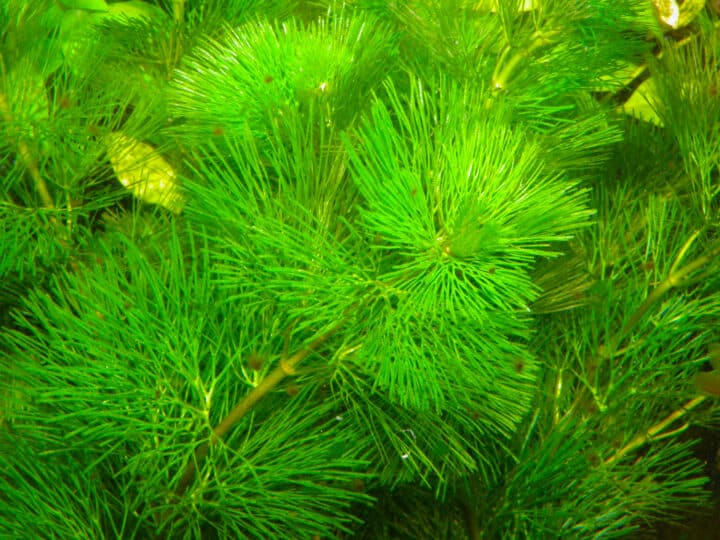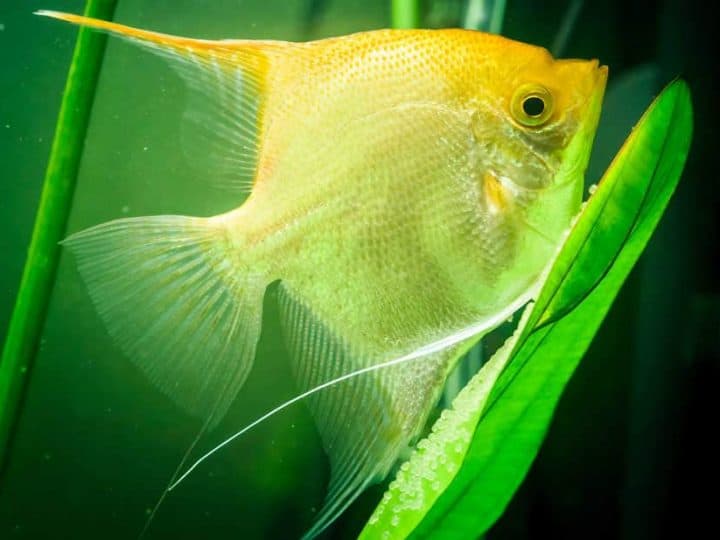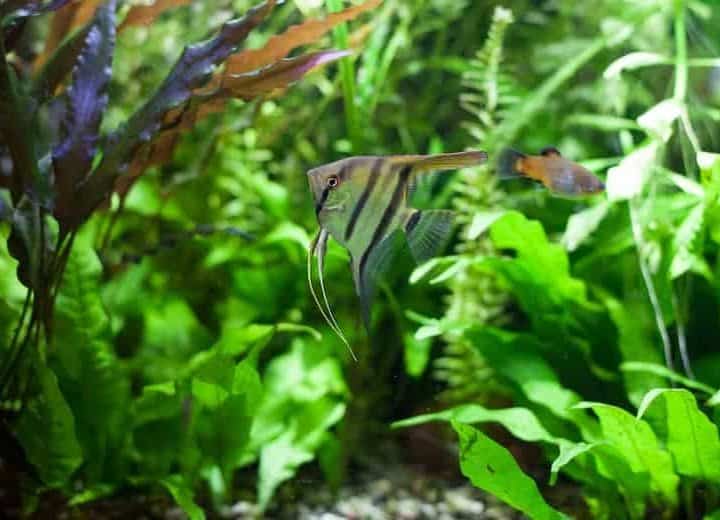I like keeping fish, but I secretly have to admit that I like aquarium plants even more, which is why today we will be looking at 11 easy aquarium plants for beginners.
Some of the best easy aquarium plants for beginners include java ferns, anubias, amazon swords, java moss, vallisneria, crypts, ambulia, hornwort, and many more.
- Java Ferns
- Anubias
- Amazon Sword
- Java Moss
- Vallisneria
- Cryptocoryne
- Bucephalandra
- Ambulia
- Marimbo moss ball
- Hornwort
- Anacharis (Brazilian Water Weeds)
All plants will be covered in detail, with images, below. Click here to skip ahead to the first plant on the list.
Right now I want to assure you that I’ve kept and seen success with all these plants. I’ve recorded a video where I introduce myself and show you my 3 aquariums. I cover what fish I have, but you can also clearly see what plants I’m keeping. That video you can find here on Youtube:
For each plant I’ll tell you the essentials. It will allow you to pick plants that are suitable for your aquarium with confidence. If you want to purchase the plants and support my website while doing so at no extra expense to you, make sure to use the Amazon links throughout this post.
Now let’s cover all plants on this list in more detail!
1. Java Fern
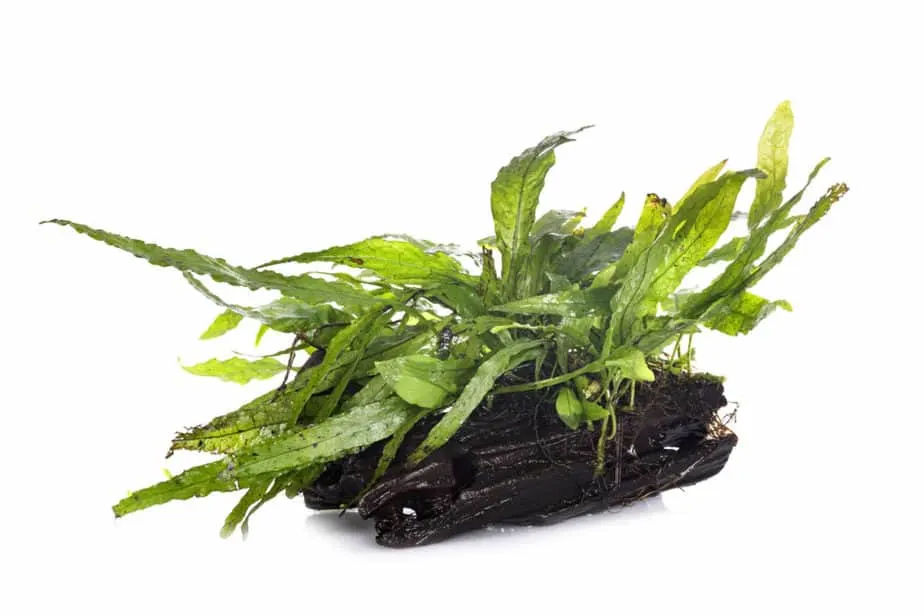
One of the first plants on this list is called Java Fern. The latin name is Microsorum pteropus and it’s a common plant that’s definitely in stock at your local fish store. Due to its popularity it really is commonly available.
Java ferns are extremely popular for three reasons:
- Java fern does not require bright lights
- It does not need additional CO2
- Java fern can be tied to wood or rocks
First of all, the plant does great under low to medium lights. There’s no need for bright lights or other expensive equipment.
Secondly, this plant does great without additional CO2. More difficult plants often require you to add pressurized CO2 in order to do well, which in turn requires expensive equipment. Not very beginner friendly. Luckily, there’s no need for this with java ferns.
Finally, the plant is very hardy and can do well when it’s tied to a piece of rock or wood. It’s even recommend to not bury the roots of a java fern plant. This BTW is also the reason why this plant is on my list of plants that are suitable to grow in an aquarium without substrate, which you can find here.
2. Anubias
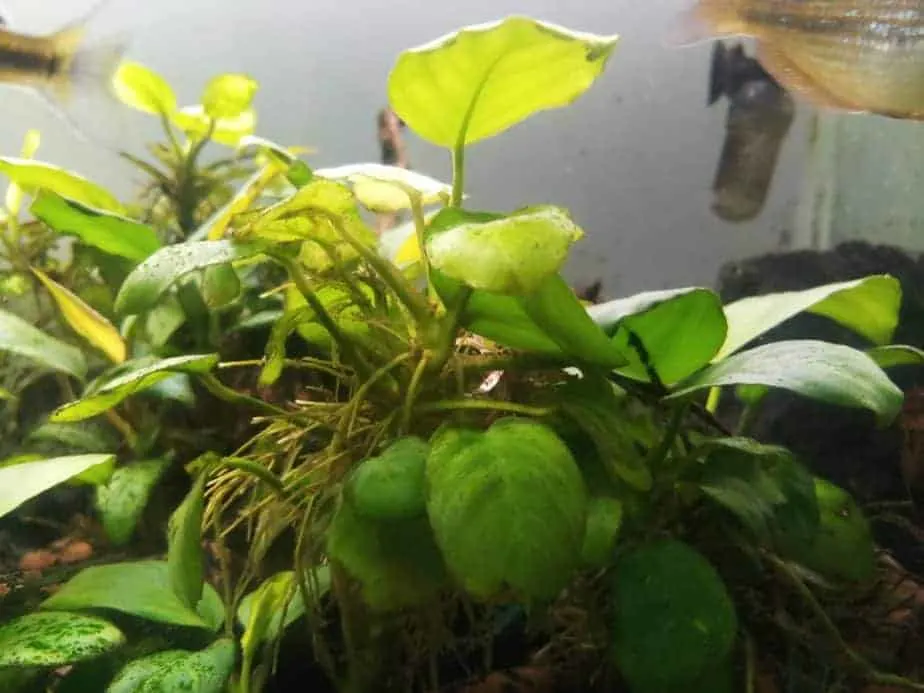
The second plant on the list is another super hardy and popular plant called Anubias. There are several varieties of Anubias plants, which vary primarily in leaf size. I’d like to recommend any Anubias plant, because their requirements are always very similar.
Anubias plants have thick, dark green leaves. It grows very slow, which is a good thing because therefore it does not require a lot of light, nutrients or additional CO2.
The fact that this plant does not require CO2 is very beginner friendly. There are more plants that are able to grow without it, which is great.
Anubias plants are extremely versitile as they are able to suck nutrients straight from the aquarium water. Just like Java Ferns actually. Pro fact, plants that are able to do this are called Epiphytes. The roots of these plants do not need to be buried in aquarium substrate.
Advantages of Anubias are the following:
- Do best under low to medium light
- Can survive almost anything
- No need for additional CO2
There’s one common downside to the slow growing Anubias plants: their leaves tend to collect algae. It’s difficult to keep Anubias plants algae free. I’ve experienced this, and so has my friend Nick from Nicksaquatics with who I’ve talked about this problem on my podcast.
3. Amazon Sword
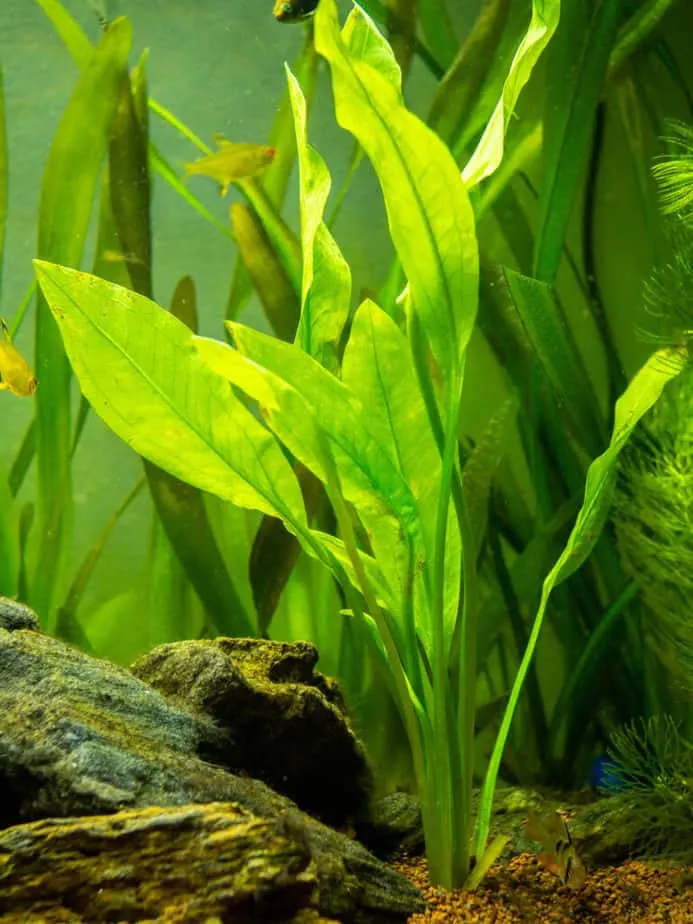
Amazon Sword is the common name of the Echinodorus Bleheri and is a rather tall plant that does great in a beginner aquarium. I actually found this image of my first aquarium set-up about 5 years ago, and I used 2 Amazon Swords to cover the intake of my canister filter.
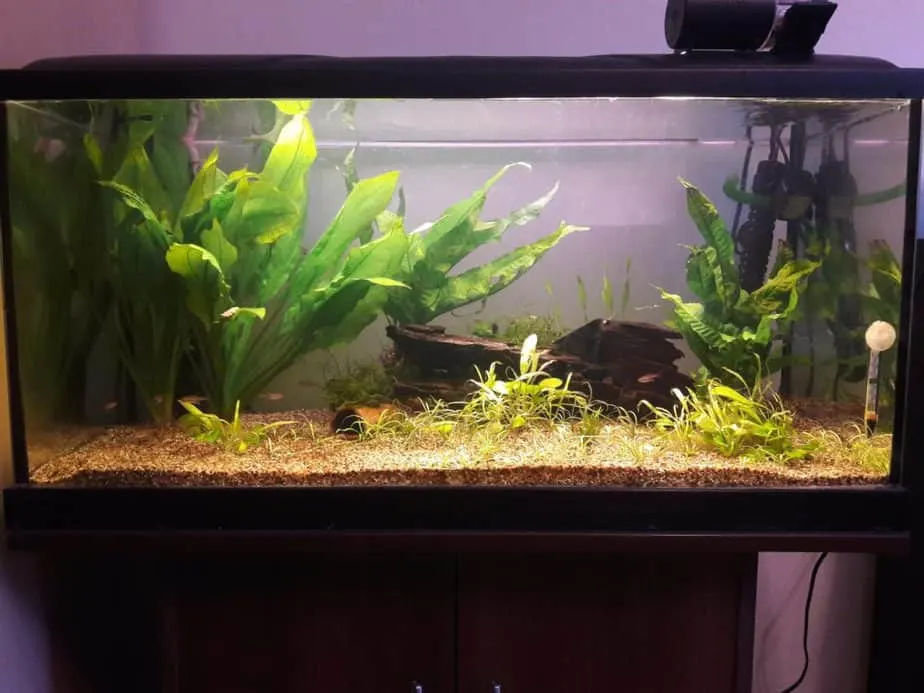
Without CO2, Amazon Swords grow but they don’t really grow fast. With additional CO2, these plants grow quickly and their leaves are pretty large!
If you choose to add one or two Amazon Swords to your tank, make sure to give them enough space! And if you every are going to re-plant them somewhere else, you’ll see how large their root ball gets. It really amazed me.
This plant is on the recommended list of both Aquarium Co-op and ModestFish. It’s also on my list of plants I recommend for angelfish, which you can check out here.
Overall, a tall, lush plant that’s definitely suitable for the beginner aquarium. I’d use them as background plants or to cover pieces of equipment like I did and still do.
4. Java Moss
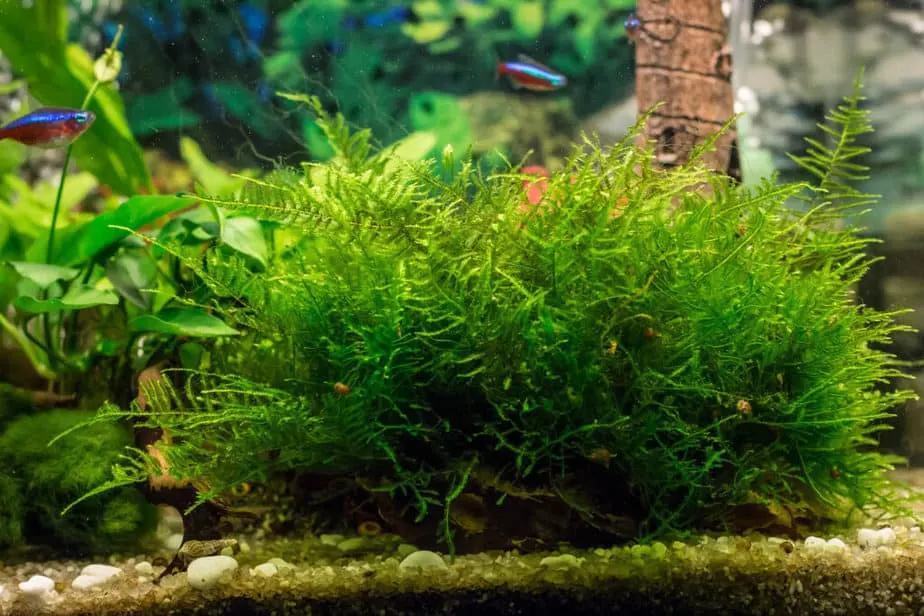
Did you know it’s possible to keep moss in an aquarium? It’s not that difficult and a great way to add plants to your tank!
Moss grows slowly but surely. I used to “harvest” my java moss and bring it back to my local fish store in exchange for store credit. I’ve bought quite some fish food by trading java moss.
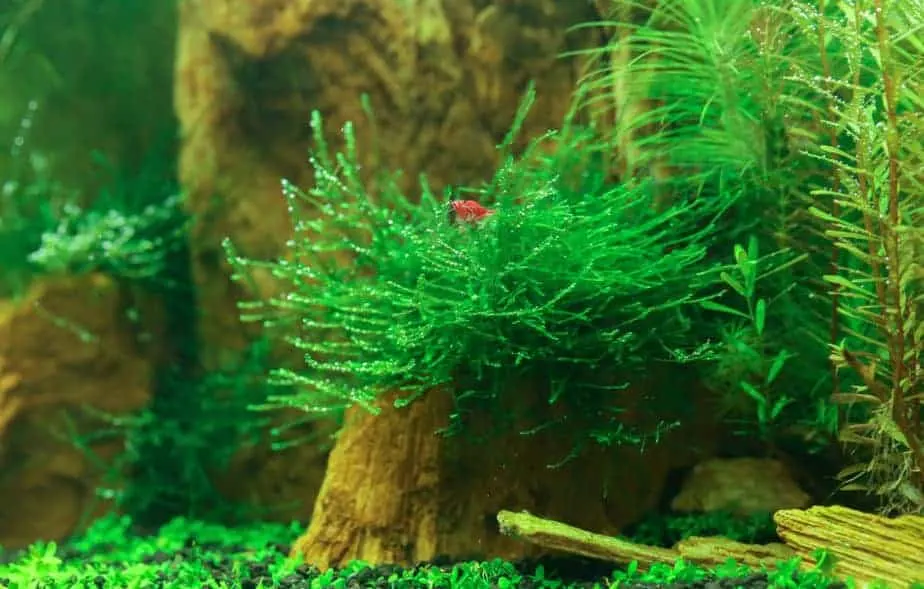
Java moss is great for shrimp or fry (baby fish) as it’s a great place for them to hide from larger fish. If you’re thinking of breeding fish or shrimp, make sure to add java moss. If you aren’t a fan of jaca moss, then another good option to consider is Christmas moss.
5. Vallisneria
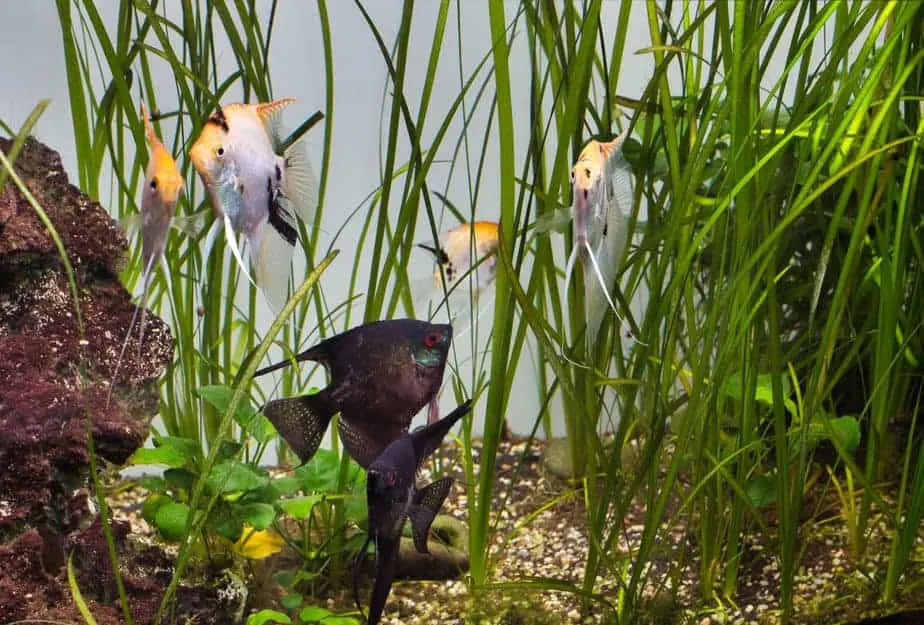
Vallisneria is a beginner friendly aquatic plant that’s given me a lot of success so far. It’s an easy plant that grows well without fancy equipment like bright lights of CO2.
I’ve talked with my friend Andrian, who’s a professional aquascaper and works at CO2art, and he also recommend Vallisneria to beginners. He confirms this plant can easily be kept without CO2.
This plant propagates through runners, which it shoots along the substrate. It’s a plant that does great in either sand or fine gravel. I’ve composed separate lists for both types of substrate:
Vallisneria ranks high in both lists.
6. Cryptocoryne
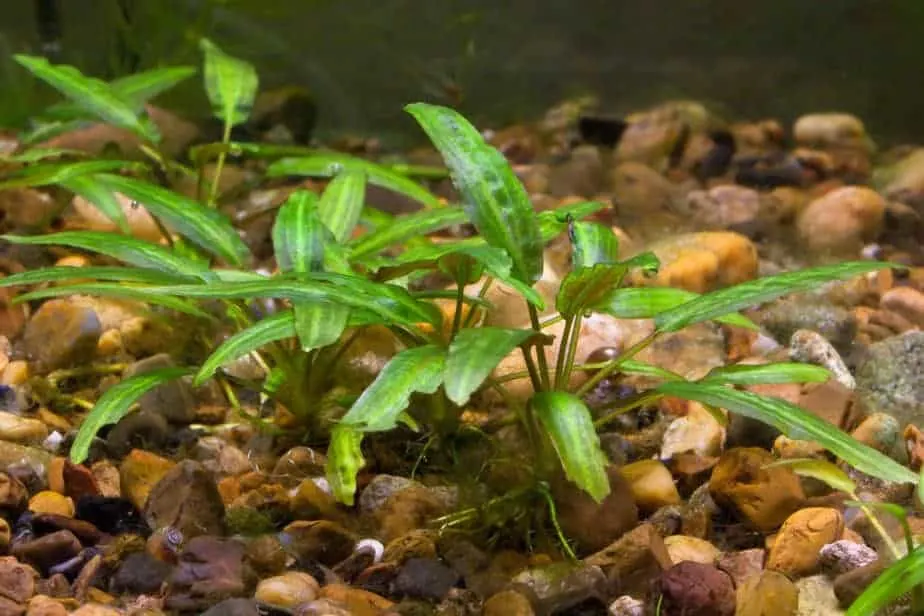
Cryptocoryne is a whole family of plants and they come in many different shapes in sizes. The most popular one is called cryptocoryne wendtii but in all honesty, there’s no need to find one specific variety.
Some varieties stay small and can form a nice carpet in your aquarium. Check out this page if you’re curious to learn more about carpeting plants.
Your local aquarium store will likely have couple in stock for you to pick from. But beware, there are a couple of things you should know.
The most important one is that cryptocoryne plants are often grown emersed (out of the water), which makes for a pretty neat looking fish tank!
For you this means two things:
- The leaves of the crypt in the store will look different once they’ve settled in your aquarium.
- It will look like your crypts are dying, while they are actually shedding the emersed leaves and growing new leaves that are suited for underwater life.
The whole emersed/submerged story is suprising to many beginner hobbyists, and it was surprising to me too. Essentially, it’s cheaper to grow aquatic plants with their roots in the water but their leaves in the air. Once you buy them and put them fully underwater, the plant needs to adapt, with the pH being one of the factors that you must consider.
But overall, all cryptocoryne plants do well under medium light and don’t require CO2. so they work well in virtually any area of the tank, whether in a new tank or otherwise. They are root-feeding plants which means that it’s beneficial to add some root tabs (nutrients) to their root network.
7. Bucephalandra
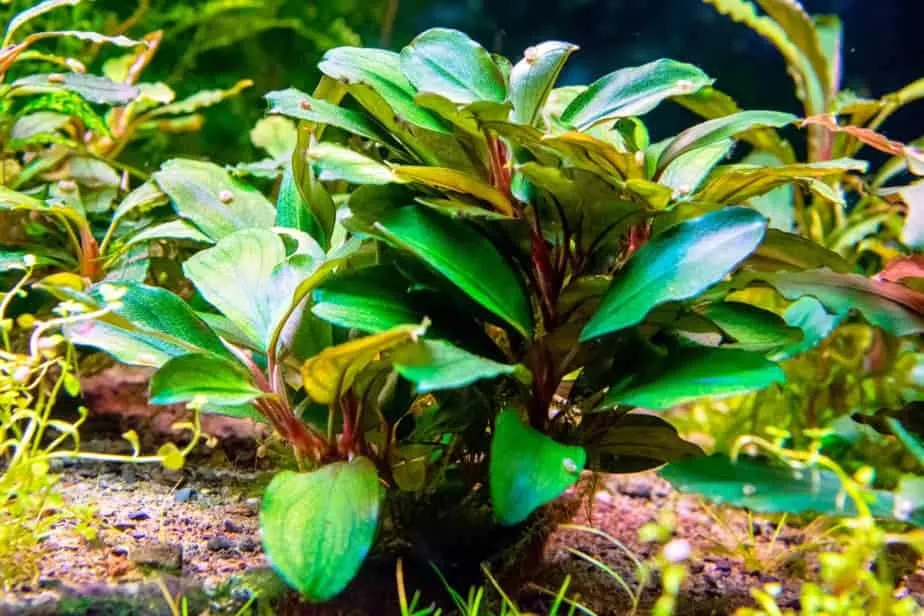
One plant that’s become more popular in the recent years is called bucephalandra. There are several bucephalandra varieties, but overall they are a great plant for beginners for a couple of reasons.
First of all, do you remember the word ‘epiphyte’ from earlier? Bucephalandra also does not need to be buried in the substrate with its roots. It even does better when you don’t do this. It’s able to absorb the nutrients straight from the aquarium water.
Secondly, it’s pretty hardy and can survive a couple of beginner mistakes without many problems. I guess its leaves are similar to those of an Anubias plant.
The color of these plants is amazing. It’s not quite red enough to be on my list of red plants, but it’s certainly an interesting texture.
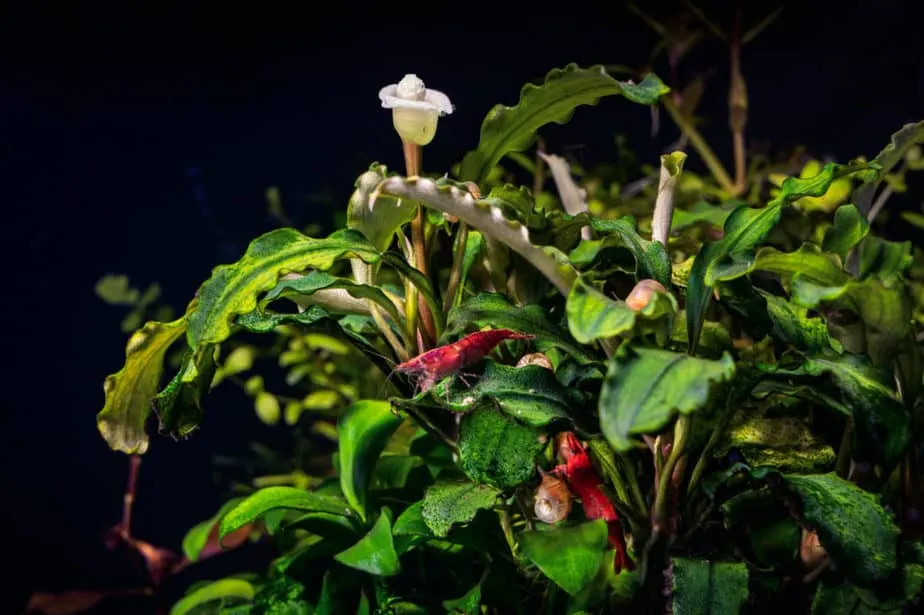
Finally, this plant is awesome because it flowers when it does well! It grows these tiny white flowers that look amazing in your aquarium. It’s also on my list of 7 aquatic plants that produce flowers, which you can find here if you’re interested in this.
And there’s also no need for additional CO2, plus it’s quite easy to care for in general. Just make sure that you keep the water paramters fairly steady. Thanks to their shape and size, they make for good midground plants in any planted tanks.
8. Ambulia
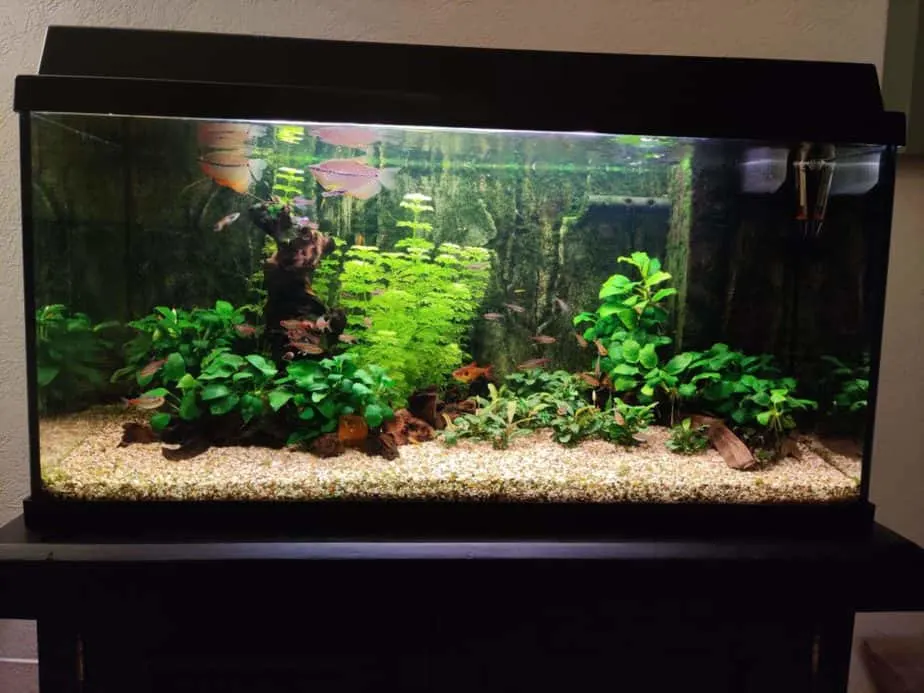
Ambulia is the first stem plant on this list, and it’s also the first stem plant that I had experience with. Right now we’re talking about the bright green group of plants in the middle of the picture.
This stem plant is a plant that you probably won’t find on any other list of beginner plants on the internet! I discovered this plant through my grandfather. The picture above actually is his aquarium. It’s him who got me interested in keeping fish and plants in the first place.
Ambulia does best under medium to bright lights, with additional CO2. Not super low-tech friendly, but if you’re just starting to experiment with CO2, this plant is super rewarding.
A stem plant is easy to propagate! Simply cut off a piece of the plant and replant it.
If your stem plants are doing well, you’ve got to be prepared to trim your aquarium often. They can grow quite fast.
When it comes to fertilization, make sure to add a good quality liquid fertilizer like Flourish from Seachem. It’s available here on Amazon.
9. Marimo Moss Balls
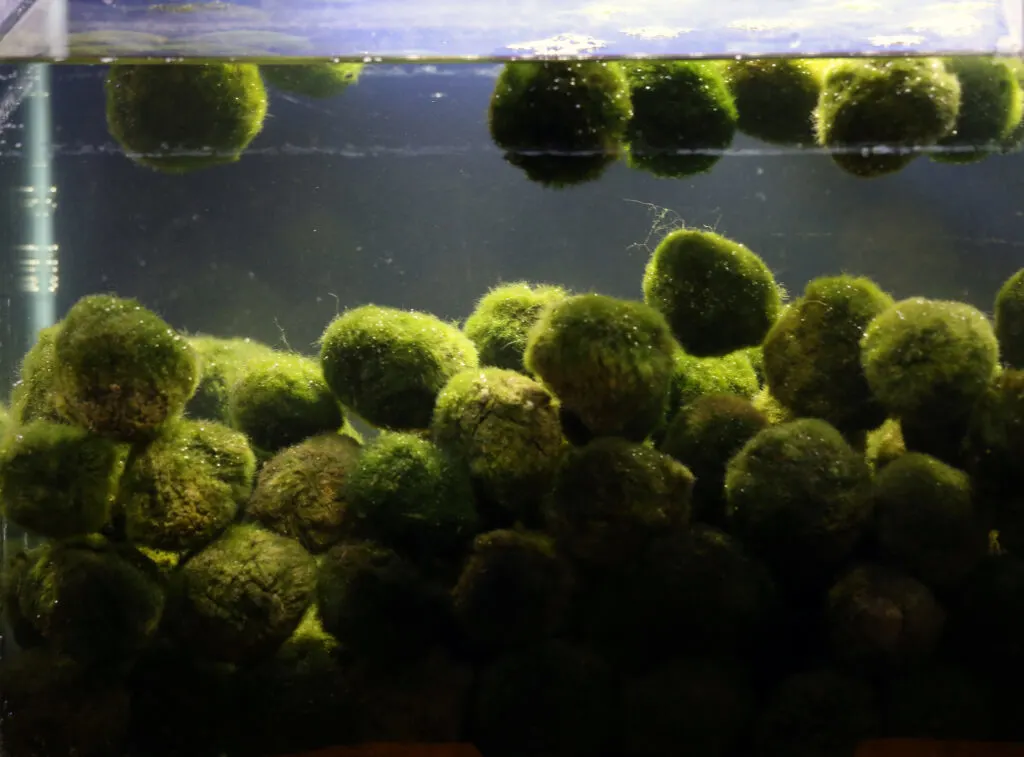
By far the easiest plant on this list are marimo moss balls. They’re not really plants, essentially they are made of algae. The round ball shape is formed through being tumbled in the current.
At first I thought these moss balls were made artificially, but they also occur in the wild!
There’s not much more to say about these moss balls. As long as you’ve got some form of lighting they will grow. Make sure to turn them over every time you do a water change, so all the sides get some light.
If you want plants, this is the easiest way to add them to your aquarium tank. They’re great as a foreground plant, and they work really well for shrimp tanks too!
They are so strong that they made it onto the list of plants that are suitable for goldfish, as they tend to destroy a lot of other plants.
10. Hornwort
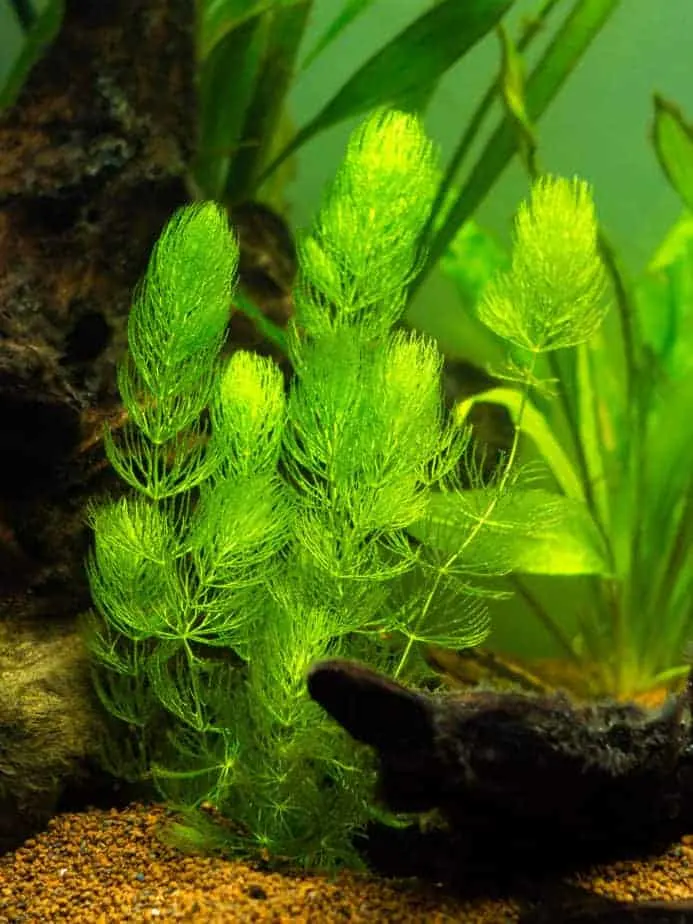
The second stem plant on this list is called Hornwort, but goes by many names. Another popular name under which you could find it at your local fish store is coontail.
There’s no doubt that this plant is suitable for beginners. Hornwort can be found worldwide and is often viewed as an invasive species. It’s super hardy and can withstand almost anything. The only continent on which you can not find hornwort is Antarctica.
Hornwort, like all stemplants, is able to absorb its nutrients from the water column and can therefore also be left floating freely in a tank.
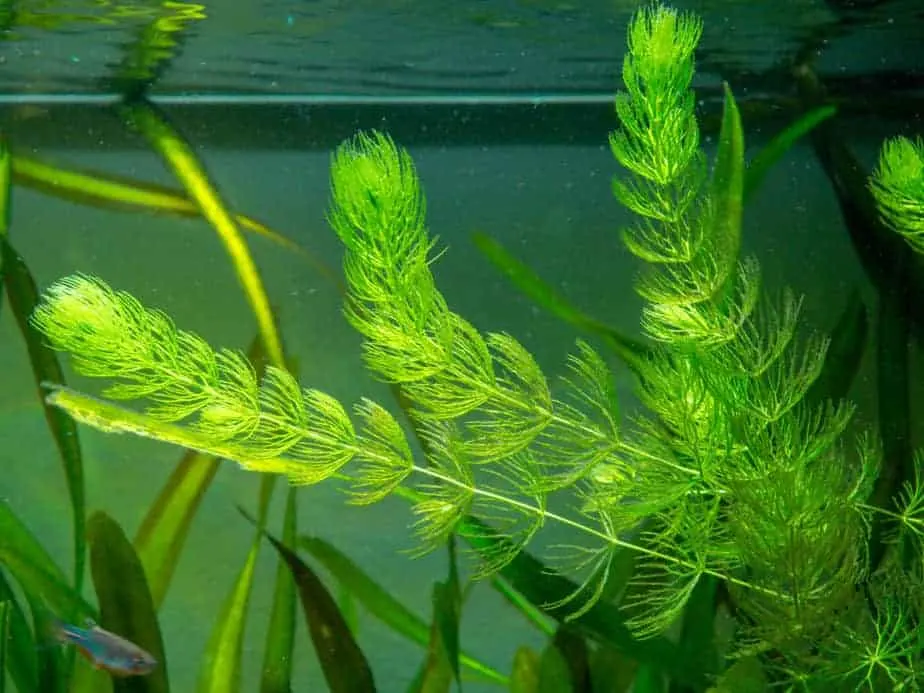
I personally have only kept Hornwort in a tank to which I was adding pressurized CO2, but I know from other hobbyists that this plant is able to do great without additional CO2 too.
Hornwort is great for small fish such as guppies, but is generally suitable for most tropical fish that we can keep in our tanks.
11. Anacharis (Brazilian Water Weed)
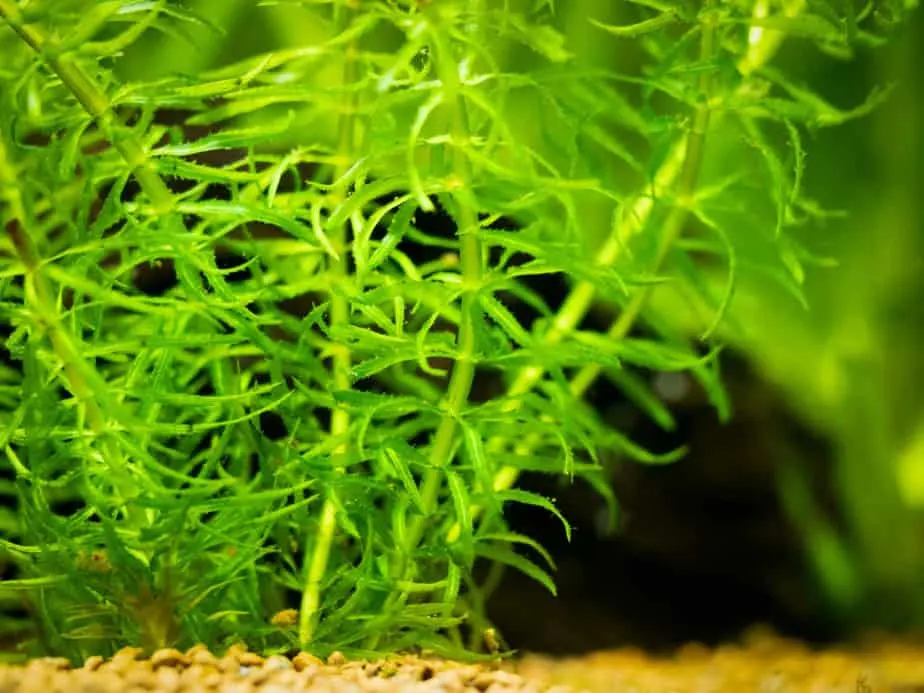
It’s funny to realize just how many different names many aquarium plants have. Anacharis has so so many. The most common one is Brazilian Water Weed, but others are Elodea Densa, Egeria or Brazilian Egeria.
Anacharis is another stem plant and is often sold as an “oxygen plant” at the goldfish section in a store.
It’s a fast growing plant, that’s great at absorbing nutrients from the water. Because of its fast growth and quick nutrient intake it’s a great way to combat algae and absorb nitrates from your aquarium water.
It’s also producing a lot of oxygen on the side, which is great for the overall health of your aquarium. These fast growing plants often do this, more about that here on my site. If you’re looking for another plant from the Amazon, then the Amazon sword plant is always worth considering too!
Below is another shot of my aquarium in the early stages. You’ll recognize the long stems of Anacharis in the middle. BTW, there’s also Anubias on the right and Cryptocoryne in the front.
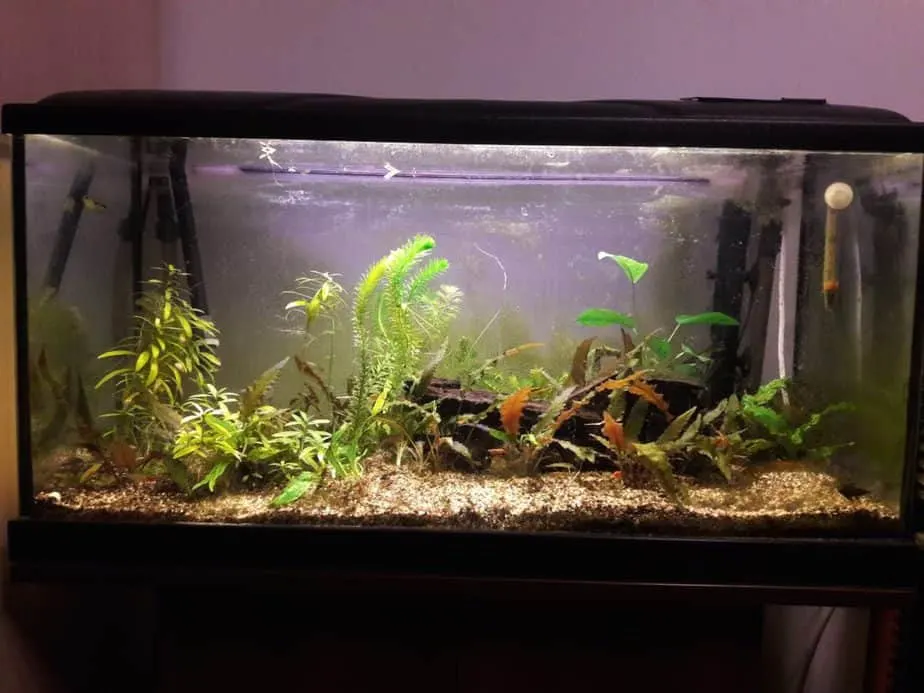
12. BONUS: Water spangles (Salvinia natans)
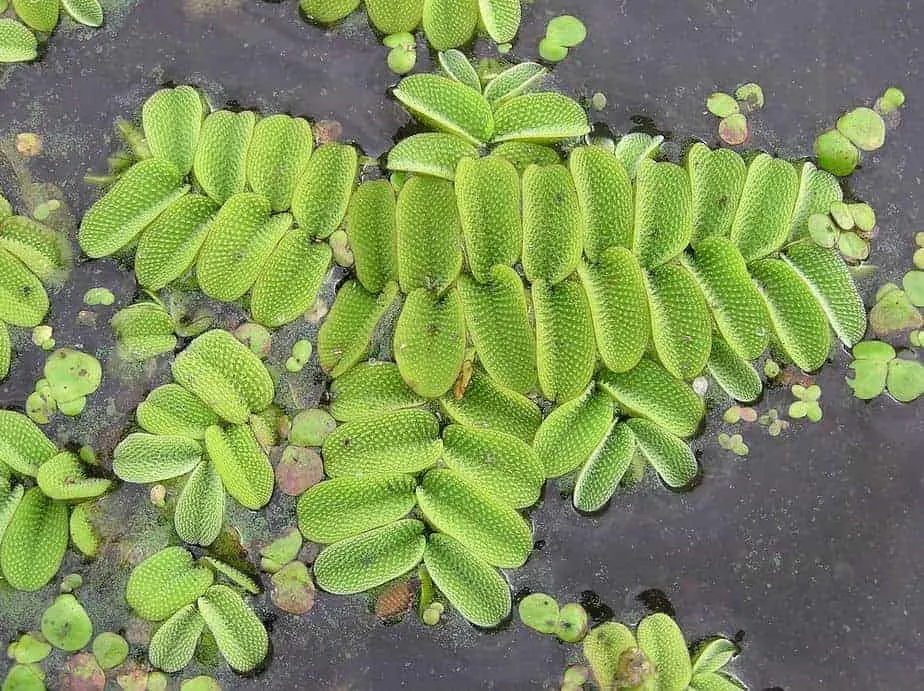
Before we dive into some tips and tricks to keep your plant keeping journey more successful, I want to recommend at least one floating plant.
Floating plants are plants that are suitable for any beginner aquarium, as long as you add enough liquid fertilizer. There’s no need to worry about CO2 as they obtain their CO2 from the air above your aquarium.
Floating plants are great to experience with! It gives fish that swim high in your aquarium, near the surface, a feeling of safety. It can therefore also alter their behavior and make them less shy.
There are many different types of floating plants, as you can read here on my website in a list, so there’s plenty of choice.
Whatever you do, do not add duckweek. It may look tempting, but once you add it and it starts to grow, it’s almost impossible to completely remove from your tank.
What Makes for an Easy Aquarium Plant for Beginners?
- One of the things that makes an aquarium plant easy for beginners is if it has low light requirements.
- Not having to supplements the plants with additional CO2 or extra fertilizers also allows for easy care.
- Aquarium plants that don’t have very specific substrate needs are also very easy to care for.
- Aquarium plants that can survive in a variety of water conditions and parameters are recommended for beginners.
- Try to choose plants that your fish don’t like to eat.
Different Fish Like Different Plants: Choose Wisely
I’ve mentioned different species of fish throughout the article and there’s a good reason for this. Different fish have different requirements and may like different things.
If you already know what fish you’re going to keep, it might be wise to look into their specific wishes. Gouramis, for example, like to build bubble nests in between floating plants. Goldfish destroy most fish, and shrimp love to hide in between moss.
Here’s a table that links to lists of plants that are specific to your fish’s needs:
| Critter | Plant List |
| Betta fish | Click here |
| Cichlids | Click here |
| Shrimp | Click here |
| Guppies | Click here |
| Discus | Click here |
| Angelfish | Click here |
| Goldfish | Click here |
| Gouramis | Click here |
| Corydoras | Click here |

